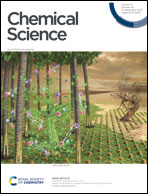Boosting the zinc storage of a small-molecule organic cathode by a desalinization strategy†
Abstract
Organic materials offer great potential as electrodes for batteries due to their high theoretical capacity, flexible structural design, and easily accessible materials. However, one significant drawback of organic electrode materials is their tendency to dissolve in the electrolyte. Resazurin sodium salt (RSS) has demonstrated remarkable charge/discharge performance characterized by a voltage plateau and high capacity when utilized as a cathode in aqueous zinc-ion batteries (AZIBs). Unfortunately, the solubility of RSS as a sodium salt continues to pose challenges in AZIBs. In this study, we introduce an RSS-containing organic compound, triresazurin-triazine (TRT), with a porous structure prepared by a desalinization method from the RSS and 2,4,6-trichloro-1,3,5-triazine (TCT). This process retained active groups (carbonyl and nitroxide radical) while generating a highly conjugated structure, which not only inhibits the dissolution in the electrolyte, but also improves the electrical conductivity, enabling TRT to have excellent electrochemical properties. When evaluated as a cathode for AZIBs, TRT exhibits a high reversible capacity of 180 mA h g−1, exceptional rate performance (78 mA h g−1 under 2 A g−1), and excellent cycling stability with 65 mA h g−1 at 500 mA g−1 after 1000 cycles.



 Please wait while we load your content...
Please wait while we load your content...